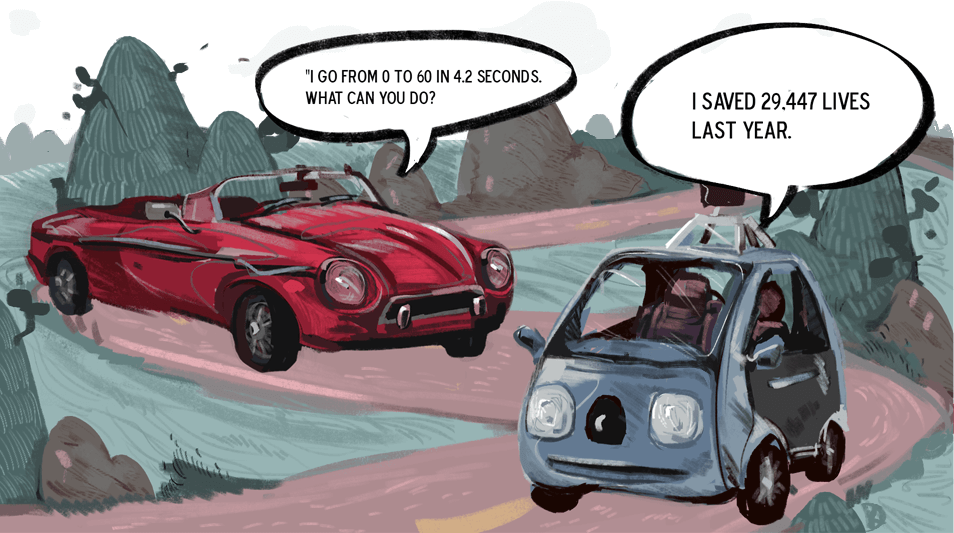
You’ve likely seen articles about driverless vehicles in the news. By 2020, you can expect to see them being sold on the consumer market. Audi has already stated that it plans to sell its first driverless vehicle in 2019, while Google is pushing to have its driverless-vehicle software commercially available by 2017. More testing is necessary in the meantime, however, and legislation needs to be put in place to provide answers to questions such as liability and safety standards.
There is little doubt that driverless vehicles will be safer than human-driven vehicles. More than 90 percent of collisions are due in part to driver error. In 2013, vehicle crashes caused 32,719 deaths in the United States. Humans have a 0.7 second response time from identifying a situation to performing an action. Driverless technology could reduce many rear-end collisions, for example, because the vehicle will be able to respond to a potential collision in a fraction of that time. Blind spots will essentially be removed because there will be a 360-degree view of objects surrounding the car. When communication among vehicles is added, many more safety features will exist, such as identifying a vehicle that will not be able to stop at a blind intersection or a car stopped in the road when visibility is limited.
Although technology isn’t flawless, driverless cars should be safer than vehicles driven by people. Consider distracted driving — texting, talking on a cell phone, changing the radio station, looking at kids in the back seat. Driverless technology would eliminate those hazards. What’s more, the emotional state of the driver would become irrelevant because a person would not be operating the vehicle.
Humans are not going to be taken out of the picture completely. The first wave of driverless vehicles will be similar to airline travel. Even though the majority of a typical flight is run on autopilot, very few people would feel comfortable getting on a plane that did not have a pilot in the cockpit. In the event of a failure or a situation that the autopilot feature cannot handle, the human pilots take control. With driverless vehicles, a human operator will need to take over control in similar situations.
That said, there’s the question of liability involved with driverless technology. If a driverless vehicle is involved in a collision, who is at fault? The answer is very easy — whoever is ultimately responsible. Driverless technology will collect so much data that the insurance companies and courts will only need to sift through it to re-create the collision. If the software in the driverless vehicle made a bad decision, the software manufacturer may be liable. If there was a mechanical failure, the auto manufacturer may be liable. If the human operator had taken control over from the vehicle, the operator may be liable. Just as credit should be given where credit is due, fault also should be attributed where fault is due.
The days of human drivers are not nearly over, but we are reaching a period where commuting long distances may not be onerous but instead productive work periods. Long road trips might not be tiresome for the driver but bonding times for families and friends. Driverless vehicles are no longer Jetsons-like ideas of the future, but are upon us now.
Jeffrey Miller, B.S. ’02, M.S. ’02, Ph.D. ’07, is an associate professor of engineering practice in the Computer Science Department at the University of Southern California. Prior to joining USC in 2013, he was an assistant and associate professor of computer systems engineering at the University of Alaska Anchorage and an adjunct professor in the Computer Science Department at California State University, Los Angeles. His research focuses on two distinct areas — intelligent transportation systems and STEM education in K-12, undergraduate and graduate students. He has published nearly 50 papers on the topics of vehicular communication and driverless vehicles. Miller has also served on the executive committee for the IEEE Intelligent Transportation Systems Society and the IEEE Vehicular Technology Society.




